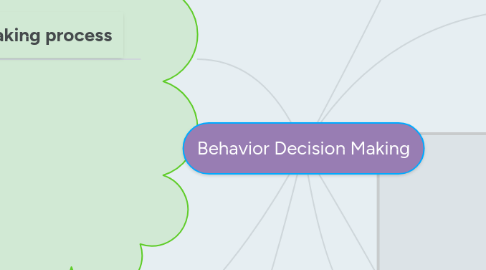
1. trialability
1.1. the degree to which it can be tried on a limited basis
2. degree to which consumers feel it is consistent with their present needs, values, and practices. EX : whatsapp & ig
3. purchase and purchasing roles
3.1. INITIATOR
3.1.1. User or others in the organization who request that something be purchased.
3.2. INFLUENCER
3.2.1. People who influence the buying decision often by helping define specifications and providing information for evaluating alternatives
3.3. DECIDER
3.3.1. People who decide on product requirements or on suppliers
3.4. BUYER
3.4.1. People who have formal authority to select the supplier and arrange the purchase terms.
3.5. USER
3.5.1. Those who will use the product or service. In many cases, the users initiate the buying proposal and help define the product requirements
4. Consumer decsion making process
4.1. Need Recognition
4.1.1. when consumers recognize they have an unsatisfied need, and they would like to go from their actual, needy state to a different, desired state
4.1.1.1. Psychological Needs
4.1.1.1.1. pertain to the personal gratification consumers associate with a product and/or service.
4.1.1.2. Functional Needs
4.1.1.2.1. pertain to the performance of a product or service
4.2. information search
4.2.1. after a consumer recognizes a need, is to search for information about the various options that exist to satisfy that need.
4.2.1.1. Internal Search for Information
4.2.1.1.1. the buyer examines his or her own memory and knowledge about the product or service, gathered through past experiences.
4.2.1.2. External Search for Information
4.2.1.2.1. the buyer seeks information outside his or her personal knowledge base to help make the buying decision
4.3. Alternative Evaluation
4.3.1. Once a consumer has recognized a problem and explored the possible options, he or she must sift through the choices available and evaluate the alternatives
4.3.1.1. Consumer Decision Rules
4.3.1.1.1. et of criteria that consumers use consciously or subconsciously to quickly and efficiently select from among several alternatives.
4.4. Purchase and Consumption
4.4.1. customers are ready to buy
4.5. Postpurchase
4.5.1. The customers feelings after the purchase
4.5.1.1. customer loyalty
4.5.1.1.1. satisfied with their purchase and buy from the same company again.
4.5.1.2. Undesirable Consumer Behavior
4.5.1.2.1. consumers who don't repeat purchase or recommend the product to others.
5. Characteristic influence Consumer acceptance
5.1. relative advantage
5.1.1. degree to which consumers consider it superior to existing substitutes. EX : Phone
5.2. Compatibility
5.3. complexity
5.3.1. the degree to which it is difficult to understand or use
5.4. observability
5.4.1. the degree to which its benefits can be observed, imagined or described
6. stages in adoption process
6.1. trial
6.1.1. consumer uses the product on a limited basis
6.2. adoption
6.2.1. if trial is favorable, consumer decides to use the product on a full, rather than a limited
6.3. evaluation
6.3.1. consumer decides whether or not to believe that this product or service will satisfy the need
6.4. interest
6.4.1. consumer is interested in the product and searches for additional information.
6.5. awareness
6.5.1. consumer is first exposed to the product innovation.
7. adopter categories
7.1. category 1 (innovators)
7.1.1. nah beli tapi takut sebb xpernah beli
7.2. category 2 ( early adoptors)
7.2.1. dia minat nah beli product baru
7.3. category 3 ( early majority)
7.3.1. dah pakai lama and suka denagn prodcut itu
7.4. category 4 ( late majority)
7.4.1. who would purchase the mature mini net book
7.5. category 5 ( laggards
7.5.1. very last to purchase the mini netbook if at all
